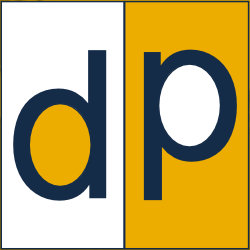Best Practices in Marine Canvas
Virtually every industry has found a way to incorporate the advantages of 3D software into their design and manufacturing process. These tools provide the most effective way to save time and eliminate costs. While it may not be an obvious candidate for utilizing this approach, the marine industry has found more than a few uses for 3D. Especially when it comes to fabrication of marine canvas.
ExactFlat. Solutions for Marine Canvas Challenges.
Marine product manufacturers began looking for process improvement tools in the late 1980’s. At that time the industry was in a bit of turmoil because of the global economic downturn. Replacing or acquiring new Marine Canvas components was considered a luxury-type idea that consumers just were not buying any more. Marine manufacturers were faced with a dilemma: “How do we continue to meet our profitability goals and still deliver quality products while shipping fewer units per year?”
The answer to this challenge was automation, which reduces time and material waste. The best area to target for automation was the labor-intensive legacy patterning process. The only practical way to automate this process was, and still is, a transition to digital.
Digital Design and Patterning Workflow Overview
Step 1. Capture the Design:
Whether the starting point is from an original 3D design, a 3D scan, or via the use of digitizing tools, the first step in any digital patterning process is to import the 3D design data. 3D CAD models capture every detail of the design (size, shape complexity, materials, etc.).
Working in 3D also allows designers to refine and edit the marine canvas pieces right alongside of the hardware, structures and hull components.
Step 2. Prepare the 3D Design for Flattening:
Once the design is captured as a 3D CAD model, the next step is to prepare the model for flattening. There are three key aspects of the model that need to be investigated at this stage of the process:
The 3D Mesh. The element shape, relative size and overall mesh density all contribute to the accuracy of the pattern.
The Material Properties. A complete and accurate description of the specific material properties is used to ensure precise fabric behavior simulation and flattening.
The Piece Cut lines. The edges of faces in 3D CAD models do not always align with the desired cut or seam line locations. The faces may need to be cut or combined to address this.
Digital Patterning solutions such as ExactFlat typically manage these aspects for the user. In addition, the ease-of-use capabilities in the software provide designers with a wide array of customization and direct control options.
Step 3. Flatten the 3D model
The next task is to generate pattern pieces that are suitable for use on the cutting table. With digital patterning the process to convert 3D designs into 2D pieces is fast and easy. Simply select the 3D pieces and let the software do the rest of the work.
Click here to see the process in action.
Step 4. Validate Fit
Pattern piece optimization is a standard and critical feature found in all true digital patterning tools. This capability is used to easily identify and adjust the design to address areas showing high strain and sag in the material. Another important tool is area comparison. This validates that the area and perimeter of the final pattern pieces matches the original product size captured in the 3D CAD model. The combination of these tools contributes directly to helping ensure the right fit on the first try.
Step 5. Add Pattern Details, and Cut
The final step is to add details such as notches, seams, grommets, zippers, etc to the patterns. Edge and piece associations carried over from the 3D model to the 2D pieces help automate this part of the process. The completed patterns are typically production-ready and can be used directly on most automated CNC cutting tables.
In some cases, additional production documentation is required. The associations generated with the 3D model are also useful in automating the creation of drawings and assembly instructions. It’s the implementation of this additive design model intelligence that helps in reducing production time and skilled labor requirements, as well as in eliminating errors.
Profitability increase is as easy as that.
In the marine industry, costly manual “tape and drape” as well as “cut, fit test, re-cut” iterations have become a thing of the past. Marine canvas manufacturers have transitioned to digital in order to eliminate iterations, to reduce project time and labor costs, and to increase overall profitability.
By implementing 3D design and digital patterning solutions like ExactFlat, designers can:
turn sketches or measurements into 3D models quickly
convert 3D models into 2D patterns in minutes
validate fit before any material is purchased or cut
Click on the link below and schedule a time to speak with one of our experts. They’ll help you determine how to begin to apply these tools in your business.











